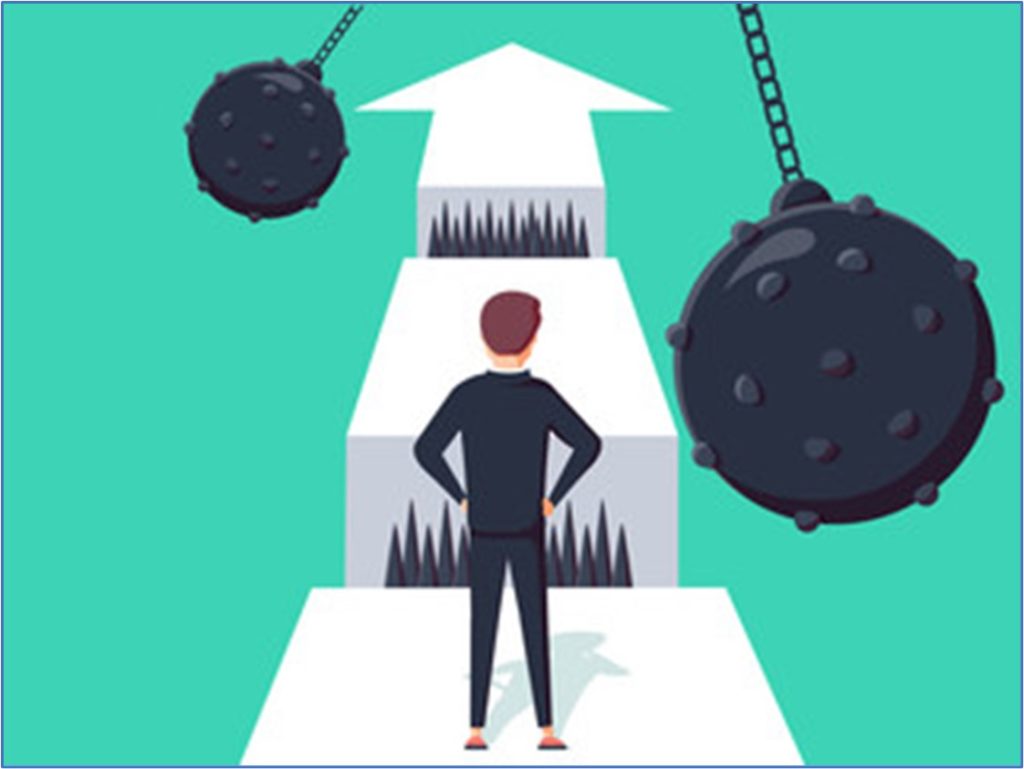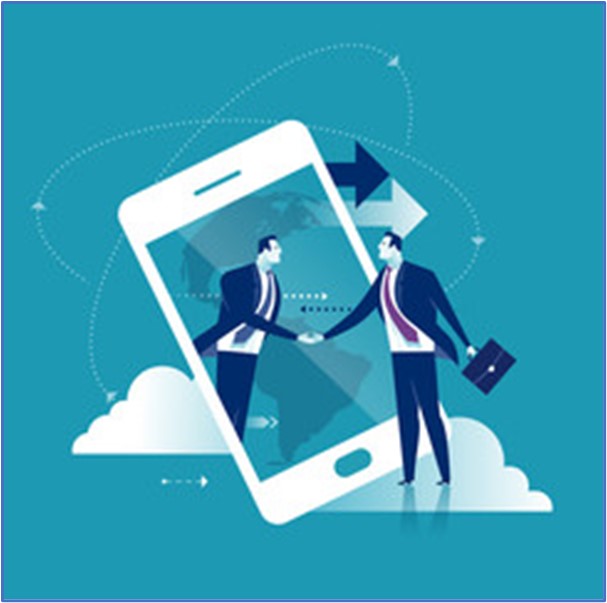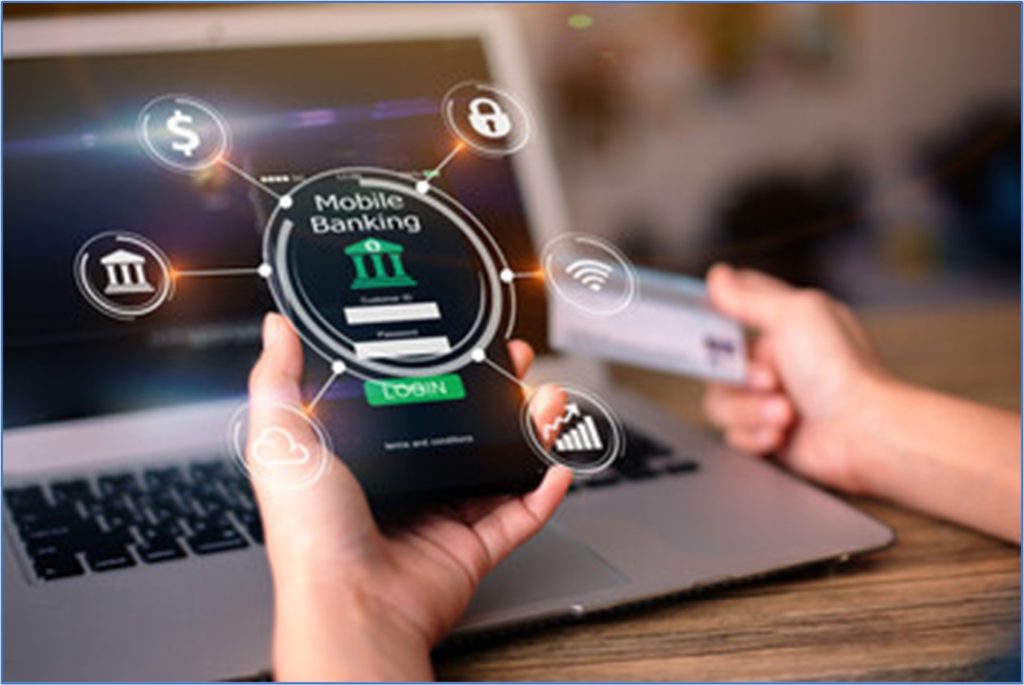-
Top 3 e-Commerce challenges

Challenging, yet rewarding
There is plenty of research and evidence that E-commerce will continue to grow in next few years to come. Companies engaging in E-commerce are growing, customers that purchase their products online are normalized across different product branches and payment methods that better suit online transactions such as PayPal/Bitcoin are becoming increasingly popular. The reasoning for this growth can be largely contributed to the flourishing of technological advancements.
Conducting business online is now easier than ever as there is a wide range of platforms for you to sell your products. Outsourcing the End-to-End Supply Chain activities is also getting more common due to the well-established third-party companies that provide professional aid to all that seek help. SMEs especially are able to scale accordingly when using outsourced Supply Chain activity.
Customers are buying their products more frequently through online platforms. This is mainly due to the convenience factor combined with the provided Supply of products, regardless of their respective branch. Nowadays, all sorts of products are bought online from groceries to wedding gifts to personalized clothing.
Lastly, payment methods are also receiving an interesting change in dynamic which contributes to the growth of Ecommerce as a concept. Very simplistic yet highly functional payment methods such as ideal are improving rapidly. A few years ago, when paying for your purchase online through ideal, you had to use your bank reader and card to finalize the purchase. This was a big hassle and turned off many customers looking to buy their products online. Nowadays, just one click of a button is required on your mobile phone to complete a purchase. You are even able to preset payment settings for known companies so that you do not need to complete a full payment process to finish the transaction. This saves a large amount of time and effort. Groceries for example can be purchased automatically by setting dates/times when running out.
In short, conducting E-commerce can be highly rewarding if done right. Needless to say, there are plenty of challenges within the industry. New challenges are also arising as some market phenomena are changing. The increase in popularity of same-day-delivery started to weigh on the supplier companies such as DHL/UPS/FedEx/TNT and resulted in a decrease in supplier performance and successful delivery KPI’s. This is just one of the many challenges that come with Ecommerce. The top 3 biggest challenges for 2022 are listed below.


Top 3 E-commerce challenges
- Competitive advantage & Competitor Analysis
With the rise of E-commerce companies, it is more and more difficult for new startups to differentiate themselves from their competition. While being difficult, it is also essential as a strong USP often provides a competitive advantage that allows companies to succeed and scale within the E-commerce business. How is this done exactly? The best way to leverage a strong competitive advantage is by continuous Competitor Analysis.
Any company within the E-commerce business looking to succeed ought to do a strong thorough analysis of their competitor. You need to know the ins and outs of your main competitors in order to reinforce your own strategy. Knowing your competitors’ products from A to Z, the way they are gaining their prospects, their handling of customers is vital as it allows you to take what works and discard what doesn’t. Knowing your competitors thus also provides you with the knowledge and ability to stand out. Study your competitors, understand what their missing and leverage it to gain your competitive advantage.
- Customer Loyalty
According to Vue.Ai et al. (2022), the importance of customer loyalty can be illustrated by the following two main facts.
*It can cost up to 5 times more to acquire a new customer than retaining an existing one.
* The success rate of selling to a current customer is 60-70% compared to only 5-20% success rate of selling to a new customer.
These two facts clearly emphasize the importance of customer retention and loyalty. Once you have acquired a customer, keeping that customer, or turning that customer into a fixed customer is highly important. This process should be seen as fuel for your business. How are companies able to do this best? Strong customer service should be top priority as this does wonders for customer retention. Follow-up is equally important as proper reach-out attempts have shown to provide remarkable conversion rates, if done correctly. Lastly, rewards. Rewarding returning customers through promotions or discounts could strongly affect your customer loyalty.
- Shipping and Delivery
On-time shipments and deliveries have proven to increase customer satisfaction by remarkable amounts. In turn, delayed shipments and lackluster delivery have proven to drastically decrease customer retention whilst creating bad brand image. With fuel pricing increasing and heavy pressure on delivery companies it is vital that companies maneuver the right way when trying to get their products to their end-customer. As discussed before, making use of a professional, experienced Supply Chain company that offers end-to-end aid can be of immense help when trying to scale your business. Even large companies should not overlook the option to outsource their supply chain as professional companies often are able to leverage great results by consolidating shipments, offering 24/7 customer service and well-established payment solutions/support.
Would you like to know more on the biggest challenges in E-commerce? Talk to a ModusLink Expert today by clicking here.
Bibliography
Ecommerce Sales Size Forecast. International Trade Administration, Accessed September 28, 2022, From https://www.trade.gov/ecommerce-sales-size-forecast
Dan Berthiaume (July 18, 2022), Survey reveals perils of poor delivery experience, Accessed September 28, 2022, From
https://chainstoreage.com/survey-reveals-perils-poor-delivery-experience
R-04_Importance of Payment Service Providers (PSP)
J. (2022, 12 mei). 16 eCommerce Challenges & Issues To Anticipate In 2022. Digital Silk. Geraadpleegd op 8 mei 2022, van https://www.digitalsilk.com/challenges-of-ecommerce
Mensak, C. (2022, 12 mei). The 9 biggest B2B e-commerce challenges businesses face. Sana Commerce. Geraadpleegd op 8 mei 2022, van https://www.sana-commerce.com/blog/top-b2b-ecommerce-challenges/
Netsolutions. (z.d.). Netsolutions. Geraadpleegd op 7 mei 2022, van https://www.netsolutions.com/insights/ecommerce-business-challenges-and-solutions/
Post, J. (2022, 18 februari). Top E-Commerce Challenges Facing SMBs. Business News Daily. Geraadpleegd op 7 mei 2022, van https://www.businessnewsdaily.com/6028-small-ecommerce-challenges.html
Vue.Ai, T., Vue.Ai, T., Rajasekar, A., Vue.Ai, T., & Vue.Ai, T. (2022, 28 april). 10 Biggest Ecommerce Challenges in 2022 + Simple Solutions. Vue.Ai Blog. Geraadpleegd op 7 mei 2022, van https://vue.ai/blog/ai-in-retail/ecommerce-challenges-in-2021/
-
What Is M Commerce in End-to-End E-Commerce Solutions?

M-commerce
In the digital day and age, online shopping and shipping services, known as e-commerce or m-commerce in some circles, are on the rise. Knowing how to utilize end-to-end e-commerce solutions in an effective and efficient manner is a big part of successful shipping services. In fact, more companies are turning to fulfillment-as-a-service providers, such as ModusLink, to simplify the process. And the most successful companies today are those that support the consumer’s journey through online shipping and commerce. But still, digital e-commerce is changing the face of standard operations.
The customer buying journey has drastically changed over the last twenty years. What used to only occur through in-person transactions has not been shifted to online shopping. According to the latest US Census data, “E-commerce sales in the second quarter of 2022 accounted for 14.5 percent of total sales.” With a smartphone in the backpocket of most Americans and more companies working across international boundaries, relying on cross-border e-commerce, it comes as no surprise that mobile commerce (m-commerce) has taken over the digital e-commerce playing field.
Defining M-Commerce
M-commerce or Mobile commerce has been a growing phenomenon for some time now. Forecasts from various sources continue to show the potential growth if Mobile commerce were to continue its path forward (which is expected). Our previous article ‘The importance of M-commerce’ emphasized on the current state of the concept, as well as highlighting the main important aspects that explain the reasoning behind the popularity.
But to success, it’s important to focus more on the upcoming/rising trends for M-commerce, also known as e-commerce and popularized across many platforms or tools, such as Microsoft Dynamics’ GP e-commerce. Keep a lookout for these trends as jumping on the wagon early might leverage your company’s significant growth increases and competitive advantage with end-to-end e-commerce solutions.
Digital E-Commerce Has Gone Mobile
At its core,m-commerce entails all activity required for the purchase of goods or services through a mobile device such as a smartphone or a tablet. According to a 2021 report by Wurmser (2021), “US retail mcommerce sales grew at 41.4% in 2020 and will grow another 15.2% in 2021, to reach $359.32 billion. Annual sales should nearly double between now and 2025.” This specific market developed at a rapid pace with new technology such as mobile banking, electronic boarding passes, food couriers and rideshare apps.
These innovative implementations have completely changed the way daily tasks are handled. Going on a flight without a paper boarding pass has removed the stress of potentially losing it.. Even in-person grocery store transactions can be fully completed on a mobile phone.The smartphone has truly become an important extension of one’s self.
While the consumer may not be aware of changes from computer-based sales to m-commerce, they are certainly aware of the convenience of it. The change in digital e-commerce experience has largely been built alongside the digital marketing shift to decreased delivery time with real-time updates. Retailers and other business owners must be aware of the rising trends within m-commerce to maximize customer experience with the best ecommerce solutions.
According to a 2021 report by Wurmser (2021), retail m-commerce sales’ share in the US as a percentage of the total sales is continuing its growth expecting to reach 10.4% in 2025. This means that M-commerce in the US market will nearly double its share of total retail sales between 2020-2025.
M-Commerce Trends
The growth of m-commerce is largely due to past and present innovative concepts. Microsoft Dynamics GP e-commerce is among one of the many game changers to order management. Decision-makers must understand the latest industry innovations to get their companies off on the right foot in every digital shift. As such, the trends below are prime examples of end-to-end e-commerce solutions that should be followed closely.
Shopping Personalization
While adjusting the shopping experience based on the individual customer in question is not anything new, the Mobile commerce market has provided new touch points throughout the customer journey. Companies have benefited from the rise of social media and influencers to encourage and personalize the mobile shopping experience. Pixel tracking, following advertisements, and mobile reminders after downloading applications are all methods that are highly effective at new customer acquisition and retention.
When conducting M-commerce, pay close attention to the ability and opportunities to personalize the shopping experience for your customer as new methods are introduced frequently. Companies now make use of ‘Predictive Analytics’. Predictive analytics are achieved through the use of Big Data. Data is being used within digital e-commerce to discover relationships and patterns between the historic data and outcomes to predict likely future behaviors.
Cryptocurrency Payments
Cryptocurrency has increased growth tremendously over the past years. It is no longer unusual for anyone to invest in cryptocurrency. The cryptocurrency market is expected to reach 1.40$ billion in 2024. The security and decentralization of cryptocurrency restrict government intervention, in turn stabilizing the security of the monetary value. The decrease of trust in Fiat further builds on this notion contributing to the expected increase in popularity of cryptocurrency.
Many digital e-commerce companies agree with the above and implement cryptocurrency as a possible method of payment for various purchases, complicating order management. Customers appreciate the introduction as large companies show that the method of payment is being used increasingly frequently.
Together, more relationships reduce costs associated with customer acquisition and retention. It is important for any m-commerce business to follow the crypto trends, and to a degree, this means leveraging the different means of social commerce.
In other words, transactions occurring across social media platforms that might rely on cryptocurrency should also be considered in your m-commerce strategy. It is recommended to introduce this payment method, when possible, through APIs or other e-commerce integrations. Of course, different payment service providers (PSP) may offer different requirements for completing
AR (Augmented Reality)
Perhaps one of the newest concepts/trends is the concept of Augmented Reality. Companies such as IKEA have proven to gain leverage using this early concept by introducing innovative methods, such as the famous ‘Try-On’ before you buy. This is essentially an integration within the IKEA mobile application that makes use of the mobile camera to visualize the object of purchase in your own living room. You are able to place and view the object in your own environment before purchasing.
There are plenty of other companies seeing the value of AR, ranging from Amazon to an assortment of retailers. Shippers should keep an open mind and follow this trend accordingly to make the most of end-to-end e-commerce solutions.
Boost Your M-Commerce with ModusLink
M-commerce trends are important to follow, keeping in mind the growth of the concept. Would you like to know more on how to implement M-commerce correctly within your business and how to choose a proper fulfillment partner? We are here to help make end-to-end e-commerce solutions easier to access, manage, and implement. Talk to a ModusLink Expert today by clicking here.
Bibliography
Clearbridge Mobile. (2015, 12 november). Why Retailers Need To Pay Attention To Mobile Personalization. Geraadpleegd op 18 april 2022, van https://clearbridgemobile.com/why-retailers-need-to-pay-attention-to-mobile-personalization/
Mobile Commerce. (2022, 11 maart). BigCommerce. Geraadpleegd op 17 maart 2022, van https://www.bigcommerce.com/
O’Connor, F. (2022, 31 maart). 8 mobile commerce trends that will dominate through 2022 and beyond. eCommerce Customer Service Software | eDesk. Geraadpleegd op 18 april 2022, van https://www.edesk.com/blog/mobile-commerce-trends/
Samsukha, A. (2022, 21 januari). M-Commerce Statistics & Mobile Shopping Trends 2022. Tech Blog | Mobile App, eCommerce, Salesforce Insights. Geraadpleegd op 16 maart 2022, van https://www.emizentech.com/blog/m-commerce-statistics-mobile-shopping-trends.html
Statista. (2021, 13 oktober). Global mobile retail commerce sales share 2016–2021. Geraadpleegd op 17 april 2022, van https://www.statista.com/statistics/806336/mobile-retail-commerce-share-worldwide/
Wurmser, Y. (2021, 4 augustus). Mcommerce Forecast 2021. Insider Intelligence. Geraadpleegd op 18 maart 2022, van https://www.emarketer.com/content/mcommerce-forecast-2021